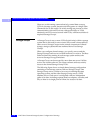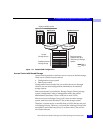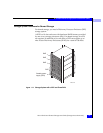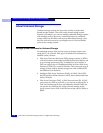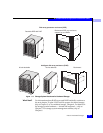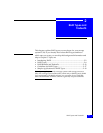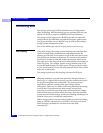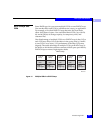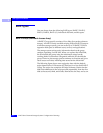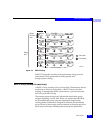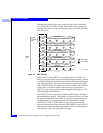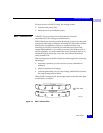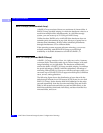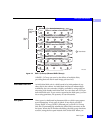
2
2-2
EMC Fibre Channel Storage-System Configuration Planning
RAID Types and Tradeoffs
Introducing RAID
The storage system uses RAID (redundant array of independent
disks) technology. RAID technology groups separate disks into one
logical unit (LUN) to improve reliability and/or performance.
The storage system supports five RAID levels and two other disk
configurations, the individual unit and the hot spare (global spare).
You group the disks into one RAID Group by binding them using a
storage-system management utility.
Four of the RAID types use disk striping and two use mirroring.
Disk Striping
Using disk stripes, the storage-system hardware can read from and
write to multiple disks simultaneously and independently. By
allowing several read/write heads to work on the same task at once,
disk striping can enhance performance. The amount of information
read from or written to each disk makes up the stripe element size.
The stripe size is the stripe element size multiplied by the number of
disks in a group. For example, assume a stripe element size of 128
sectors (the default) and a five-disk group. The group has five disks,
so you would multiply five by the stripe element size of 128 to yield a
stripe size of 640 sectors.
The storage system uses disk striping with most RAID types.
Mirroring
Mirroring maintains a second (and optionally through software, a
third) copy of a logical disk image that provides continuous access if
the original image becomes inaccessible. The system and user
applications continue running on the good image without
interruption. There are two kinds of mirroring: hardware mirroring,
in which the SP synchronizes the disk images; and software
mirroring, in which the operating system synchronizes the images.
Software mirroring consumes server resources, since the operating
system must mirror the images, and has no offsetting advantages; we
mention it here only for historical completeness.
With a storage system, you can create a hardware mirror by binding
disks as a RAID 1 mirrored pair or a RAID 1/0 Group (a mirrored
RAID 0 Group); the hardware will then mirror the disks
automatically.



